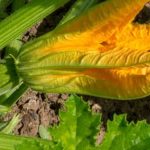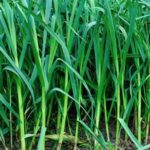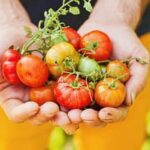Are you a North Dakota resident interested in fall vegetable gardening? Fall vegetable gardening is crucial in North Dakota due to its short growing season and unpredictable weather. To optimize your fall vegetable gardening experience, consider utilizing low hoop tunnels. These structures can protect your crops from frost and cold temperatures, allowing you to extend the growing season and harvest fresh produce well into the fall.
Low hoop tunnels are a cost-effective and efficient way to create a favorable environment for growing fall vegetables in North Dakota. By understanding how to utilize these structures, you can significantly improve the success of your garden during the autumn months. From selecting the right vegetables to preparing the soil, low hoop tunnels play a vital role in maximizing your fall vegetable gardening efforts in North Dakota.
In this article, we will explore the ins and outs of fall vegetable gardening in North Dakota, with a specific focus on utilizing low hoop tunnels. We will delve into the benefits of using these structures, providing guidance on selecting suitable vegetables, preparing the soil, planting and maintaining crops, protecting them from frost and cold, as well as harvesting and storing your bountiful harvest.
Additionally, we will share success stories from fellow North Dakota gardeners who have achieved outstanding results with their fall vegetable gardens using low hoop tunnels.
Understanding Low Hoop Tunnels
A low hoop tunnel is a simple and cost-effective way to extend the growing season for vegetables in North Dakota. Also known as a row cover, a low hoop tunnel consists of bent PVC or metal pipes covered with clear plastic or row cover fabric. This creates a protective structure that helps to trap heat and protect plants from frost and cold temperatures, allowing them to thrive well into the fall months.
Benefits of Low Hoop Tunnels
Low hoop tunnels offer several benefits, especially for fall vegetable gardening in North Dakota. By creating a microclimate within the tunnel, they can help to regulate temperature and humidity levels, keeping plants warm during chilly nights. This allows gardeners to grow cold-tolerant veggies like kale, spinach, carrots, and lettuce well beyond the typical growing season. Additionally, low hoop tunnels offer protection from pests and harsh weather conditions, promoting healthier plant growth.
Setting Up a Low Hoop Tunnel
Setting up a low hoop tunnel is relatively easy and requires minimal materials. Gardeners in North Dakota can start by selecting a suitable location with good sun exposure and adequate drainage. Then, using hoops made of PVC or metal conduit pipe, they can create an arched structure over their garden bed.
The plastic or row cover fabric is then draped over the hoops and secured in place using clips or weights. Proper ventilation is also essential, so it’s important to leave openings at either end of the tunnel for air circulation.
Overall, low hoop tunnels are an excellent tool for extending the fall vegetable gardening season in North Dakota. They provide protection from frost and cold temperatures while creating an ideal environment for growing cool-weather crops. With proper care and maintenance, these structures can help gardeners enjoy fresh produce well into autumn.
Selecting the Right Vegetables
When selecting vegetables to plant in a low hoop tunnel during the fall in North Dakota, it’s important to choose varieties that can thrive in cooler temperatures and shorter daylight hours. Here are some options that are well-suited for fall vegetable gardening in North Dakota:
- Leafy greens: Vegetables like kale, spinach, and Swiss chard are excellent choices for fall planting. These hearty greens can withstand cooler temperatures and often improve in flavor after being exposed to frost.
- Root vegetables: Carrots, beets, radishes, and turnips are all great options for fall planting in North Dakota. These vegetables can handle the cold and continue to grow even as temperatures drop.
- Brassicas: Cabbage, Brussels sprouts, and broccoli are part of the brassica family and do well in fall gardens. These vegetables benefit from the cooler weather and can be planted in a low hoop tunnel for added protection from frost.
Additionally, consider using row covers or frost blankets within the low hoop tunnels to provide even more insulation for your selected crops. This extra layer of protection can help extend the growing season for these vegetables, allowing you to enjoy fresh produce well into the fall months.
Ultimately, choosing the right vegetables for your low hoop tunnel in North Dakota will depend on factors such as your specific location within the state and your individual gardening goals. Experimenting with different varieties each season can help you determine which vegetables are best suited to your particular conditions and preferences. By carefully selecting your fall crops, you can maximize the potential of your low hoop tunnel to yield an abundant harvest despite the challenges of colder weather.
Preparing the Soil
When it comes to fall vegetable gardening in North Dakota, preparing the soil is crucial for a successful harvest. The following tips will help optimize soil health and fertility, setting the stage for a bountiful growing season:
- Conduct a soil test: Before planting your fall vegetables, it’s important to understand the condition of your soil. A soil test will provide valuable information about pH levels, nutrient deficiencies, and organic matter content. Based on the results, you can make informed decisions about amendments and fertilizers.
- Add organic matter: Incorporating organic matter into the soil improves its structure, drainage, and nutrient-holding capacity. Compost, well-rotted manure, or cover crops can be used to increase organic matter content. Mix these materials into the top few inches of soil to enrich it for planting.
- Fertilize appropriately: Based on the results of your soil test, choose a balanced fertilizer that addresses any deficiencies identified. Slow-release fertilizers are often recommended for fall vegetable gardening as they provide a steady supply of nutrients over time.
In addition to these general tips for improving soil health and fertility, North Dakota gardeners should also consider the specific needs of their chosen fall vegetables. Some crops may benefit from additional amendments or specialized care based on their individual preferences and requirements.
By taking the time to properly prepare the soil before planting, gardeners can create optimal growing conditions for their fall vegetables in North Dakota’s low hoop tunnels. This proactive approach sets the stage for healthy plants and a successful harvest come autumn.
Planting and Maintaining
Choosing the Right Vegetables
When it comes to fall vegetable gardening in North Dakota using low hoop tunnels, it’s essential to choose the right vegetables. Look for cold-hardy varieties that can thrive in cooler temperatures and withstand frost. Some excellent options for planting in low hoop tunnels during the fall season include kale, spinach, lettuce, carrots, radishes, and beets. These vegetables not only tolerate lower temperatures but also benefit from the protection provided by the low hoop tunnel.
Watering and Fertilizing
Once you have planted your chosen vegetables in the low hoop tunnel, it’s crucial to maintain their health and growth. Regular watering is essential, especially since North Dakota’s fall season can bring drier conditions. Keep an eye on soil moisture levels and ensure that your vegetables receive adequate water. Additionally, consider adding organic fertilizers to replenish nutrients in the soil to support healthy plant growth.
Weed Control and Pest Management
Another aspect of maintaining vegetables in a low hoop tunnel during the fall season is weed control and pest management. Be diligent about removing any weeds that may compete with your vegetables for resources. Additionally, keep an eye out for pests that may seek shelter in the low hoop tunnel during cooler weather. Inspect your plants regularly and take necessary measures to prevent or address any pest issues, such as introducing beneficial insects or using organic pest control methods.
Pruning and Training
As your fall vegetables start to grow within the confines of the low hoop tunnel, consider pruning and training techniques to optimize space utilization and encourage healthy growth. Pruning encourages strong plant development by removing dead or damaged parts, while training plants such as tomatoes or cucumbers can help them grow upwards within the limited space of the low hoop tunnel. These practices can lead to increased yields and healthier plants throughout the fall season in North Dakota.
Protecting From Frost and Cold
Protecting fall vegetables from frost and cold temperatures in North Dakota is crucial for a successful harvest. Low hoop tunnels are an effective way to shield plants from these harsh conditions, providing a warm and sheltered environment for optimal growth. These structures are easy to set up and can make a significant difference in the health and productivity of your fall garden.
One of the key benefits of using low hoop tunnels to protect fall vegetables in North Dakota is their ability to create a microclimate that is warmer than the surrounding environment. This is especially important as temperatures start to drop in the fall, allowing plants to thrive even as winter approaches. The tunnel structure traps heat during the day and releases it at night, helping to maintain a consistent temperature that is conducive to plant growth.
It’s important to select the right materials for your low hoop tunnel to ensure adequate protection for your fall vegetables. Clear plastic or row cover fabric can be used to cover the hoops, creating a barrier against frost and cold winds while still allowing sunlight to penetrate. Additionally, proper ventilation is essential to prevent overheating on sunny days and ensure good air circulation, which helps reduce disease risks.
Despite their many benefits, low hoop tunnels also require maintenance and monitoring, especially during extreme weather conditions. Checking on your crops regularly and making adjustments as needed will help you address any issues before they become major problems. With proper care, your fall vegetables can thrive in a low hoop tunnel throughout the season, providing you with a bountiful harvest.
| Benefit | Aspect |
|---|---|
| Creates a warmed microclimate | Key benefit |
| Clear plastic or row cover fabric | Choice of materials |
| Maintenance and monitoring necessary | Care requirement |
Harvesting and Storing
As the fall season progresses in North Dakota, it’s important to know the optimal time for harvesting fall vegetables. Many root vegetables such as carrots, beets, and turnips can withstand light frosts and become even sweeter after experiencing cooler temperatures.
Leafy greens like kale and spinach should be harvested before the first hard frost, as they become bitter once exposed to cold temperatures. It is essential to keep an eye on the weather forecast and plan your harvest accordingly to ensure that your vegetables are collected at their peak freshness.
Once your fall vegetables have been harvested, it’s crucial to store them properly to maximize their shelf life. Root vegetables such as potatoes, carrots, and onions should be stored in a cool, dark place with proper ventilation to prevent spoilage.
Leafy greens can be stored in the refrigerator crisper drawer or preserved through methods like blanching and freezing for long-term storage. By following these tips, you can enjoy the bounty of your fall vegetable garden well into the winter months in North Dakota.
To preserve your hard-earned harvest from a low hoop tunnel during the fall season in North Dakota try using organic practices when possible; this can include using natural pest control methods and avoiding chemical fertilizers. Properly storing harvested fruits and vegetables helps reduce food waste by allowing you to enjoy your homegrown produce for longer periods.
| Fall Vegetable | Optimal Harvest Time |
|---|---|
| Carrots | After light frosts for increased sweetness |
| Kale and Spinach | Before first hard frost to avoid bitterness |
| Potatoes, Carrots, Onions | Cool, dark place with proper ventilation for storage |
Success Stories
In conclusion, fall vegetable gardening in North Dakota can be a rewarding and successful endeavor, especially when utilizing low hoop tunnels. These structures provide protection from frost and cold temperatures, making it possible to extend the growing season and enjoy fresh produce well into the fall months. By understanding how to select the right vegetables, prepare the soil, plant and maintain crops, and protect them from the elements, gardeners in North Dakota can achieve great results with fall vegetable gardening.
One of the key benefits of using low hoop tunnels for fall vegetable gardening in North Dakota is the ability to create a microclimate that is conducive to plant growth. These structures help to trap heat during the day and provide insulation at night, which can make a significant difference in the success of a fall garden. With careful planning and maintenance, it is possible to cultivate a wide variety of vegetables even as temperatures start to drop.
Many gardeners in North Dakota have experienced tremendous success with fall vegetable gardening in low hoop tunnels. Their stories serve as inspiration for others who may be considering embarking on their own fall gardening journey. With proper planning, dedication, and hard work, it is entirely possible to enjoy an abundant harvest of fresh vegetables well beyond the traditional growing season in North Dakota.
Frequently Asked Questions
What Can I Plant in My Hoop House in the Fall?
In the fall, you can plant a variety of crops in your hoop house such as lettuce, kale, spinach, arugula, radishes, carrots, and beets. These cooler weather vegetables thrive in the protected environment of a hoop house.
What Can You Grow in a Low Tunnel?
A low tunnel is ideal for growing cold-hardy crops such as lettuce, spinach, kale, radishes, and carrots. These vegetables can withstand colder temperatures and benefit from the added protection provided by the low tunnel.
What Can I Plant in the High Tunnel in the Fall?
In the high tunnel during the fall season, you can plant a wider range of crops compared to outdoor planting. This includes leafy greens like lettuce and arugula, root vegetables like beets and turnips, and even some cold-tolerant herbs. The high tunnel provides a favorable environment for these crops to thrive despite dropping temperatures outside.

If you’re looking to get into vegetable gardening, or are just looking for some tips on how to make your current garden better, then you’ve come to the right place! My name is Ethel and I have been gardening for years. In this blog, I’m going to share with you some of my best tips on how to create a successful vegetable garden.





